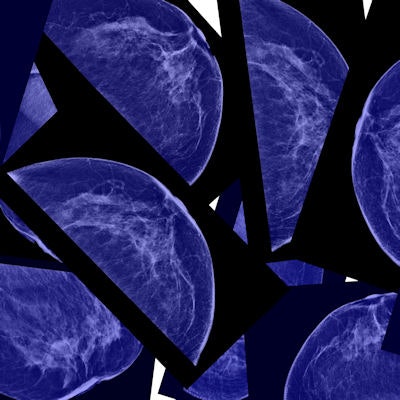
Two-dimensional images synthesized from digital breast tomosynthesis (DBT) scans are comparable to digital 2D images acquired with mammography for evaluating breast density, according to a study in the July issue of the American Journal of Roentgenology.
The finding is good news for women with dense tissue because a DBT exam with synthesized 2D images exposes them to less radiation, wrote a team led by Dr. Taghreed Alshafeiy from the University of Virginia.
"Consistency in breast density interpretation has important implications in clinical practice, especially for identifying women who may benefit from supplemental screening," the authors wrote. "Our results showed that there is almost perfect agreement in breast density assignment between standard and synthetic 2D images."
Same same?
DBT has been shown to be an effective screening modality for women with dense breast tissue, finding more cancers than mammography alone. But in combination with digital mammography, the exam imparts double the radiation dose to acquire a 2D image to go along with the 3D dataset.
To solve the problem, DBT vendors have developed software that generates 2D images from tomosynthesis data, and studies have shown that these images are comparable to digital mammography images for performance measures such as cancer detection and recall rates. But whether this holds true for evaluating breast density has remained unclear.
Alshafeiy and colleagues sought to address the issue in their study, which included 309 women who underwent screening with digital mammography and tomosynthesis during May 2015. All had negative or benign outcomes (AJR, July 2017, Vol. 209:1, pp. W36-W41).
Three radiologists read standard 2D and synthesized 2D images in separate reading sessions, and they assigned BI-RADS breast density categories to each; the researchers then assessed inter- and intrareader agreement between the two groups of images. All of the cases had a consensus reading, in which at least two of the three readers agreed on the BI-RADS density category assigned.
Alshafeiy's team found 80.3% agreement among the readers for the four BI-RADS density categories for digital and synthesized 2D images. For a two-category scale -- dense or nondense -- reader agreement was 91.9%.
The researchers did find differences among the readers. Reader 1 assigned more digital mammography images to dense categories, while reader 2 assigned synthesized 2D and digital 2D images to dense categories equally. Reader 3 assigned more synthesized 2D images to dense categories.
Intermodality agreement for each reader was still high, however: The use of synthesized 2D images didn't significantly change women's assignment to dense or nondense categories.
Trust the image
What's the takeaway? Synthesized 2D images can be trusted when evaluating a woman's breast density -- and therefore her potential need for additional screening, Alshafeiy and colleagues wrote.
"Practices can readily adopt synthetic 2D mammography without concern that it will affect density assessment and subsequent recommendations for supplemental screening," they concluded.




















